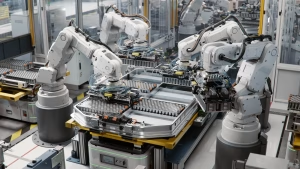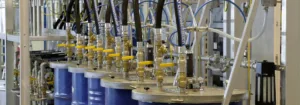Air motors deliver a powerful combination of high torque, low weight, and fast response, making them ideal for demanding industrial tasks. But without precise torque control, performance can vary and efficiency drops.
This guide explains how to regulate torque in air motors through pressure, flow, and load management—and how to design a control system that ensures accuracy, consistency, and safety.
What Is Torque Control in Air Motors?
Torque control means regulating the rotational force an air motor produces. Accurate torque control ensures reliable positioning, speed, and load matching in applications such as robotics, manufacturing, and medical devices.
Key factors influencing torque include:
Air pressure: Higher inlet pressure increases torque output.
Motor design: Rotor and stator geometry directly affect torque generation.
Load: Resistance on the output shaft determines how much torque the motor must deliver.
Core Torque Control Techniques
1. Pressure Regulation
Pressure regulators maintain a steady air supply, allowing precise control of torque output.
To enhance accuracy:
Adjust the regulator to match your torque target.
Integrate pressure sensors for real-time feedback and automatic correction.

2. Flow Control
Flow restrictors and flow meters help limit and measure the volume of air reaching the motor.
Restrictors reduce torque output without altering air pressure.
Flow meters verify airflow rates to maintain stability.
This method works best for applications requiring gradual torque adjustments or energy-efficient operation.
3. Speed Control
Since torque relates to speed and load, controlling speed indirectly manages torque.
Use speed controllers to stabilize RPM under varying loads.
Combine with tachometers to measure real-time motor speed.
Feed tachometer data back to the controller for dynamic correction.
4. Load Sensing
Load sensing provides direct or indirect torque feedback, improving accuracy in adaptive systems.
Torque sensors measure the motor’s actual torque output.
Load cells detect the force exerted on the driven mechanism.
Integrating these sensors into a feedback loop lets your control system respond instantly to load variations.
Designing for Effective Torque Control
To achieve reliable, precise performance, pay attention to these design elements:
Motor selection: Match torque range, operating pressure, and speed capacity to your application.
Control architecture: Develop a system that senses torque, processes feedback, and adjusts inputs automatically.
Environment: Account for temperature, air quality, and humidity—these can affect air density and torque stability.
Load characteristics: Understand inertia, friction, and resistance changes to fine-tune control loops.
Common Applications of Torque-Controlled Air Motors
Robotics
Precise torque prevents over-tightening and ensures smooth movement for robotic arms and grippers.
Manufacturing
Assembly tools and machining processes rely on stable torque for product consistency and quality assurance.
Medical Equipment
Air-driven surgical tools and prosthetics require accurate torque control for safety and precision.
Automotive
From adjustable seats to door latches, torque-controlled air motors ensure reliable, smooth operation.
Best Practices for Optimizing Performance
Use closed-loop systems combining pressure, flow, and torque sensors.
Regularly calibrate sensors to maintain control accuracy.
Choose high-efficiency air filters to stabilize supply pressure and prevent contamination.
Implement predictive maintenance using sensor data trends.
Torque Control in Air Motors FAQ
It ensures consistent performance, prevents mechanical stress, and enhances efficiency in precision applications.
Use inline torque sensors or load cells that provide real-time feedback to the control system.
Regulate air pressure and flow rate while monitoring feedback from sensors. Closed-loop systems offer the best accuracy.
Yes. Add external pressure regulators, sensors, and a controller to create a responsive control loop.
By combining pressure regulation, flow control, and load sensing, you can fine-tune torque output and improve air motor performance. A well-designed control system leads to higher precision, lower wear, and improved efficiency.
Need Help with Torque Control Design?
At Industrial Motors, we specialize in optimizing pneumatic systems for precision control.
👉 Contact our engineering team to discuss your application and get tailored recommendations for torque-controlled air motors.


